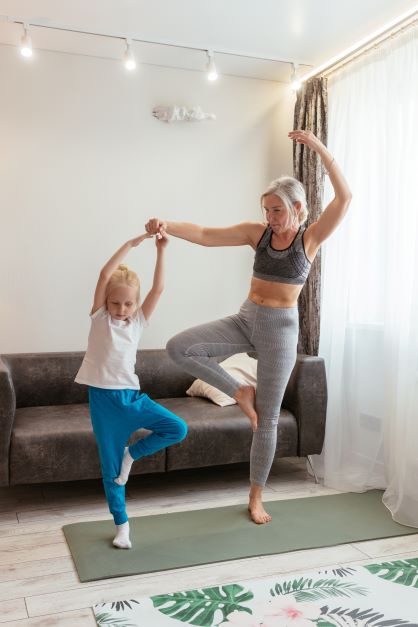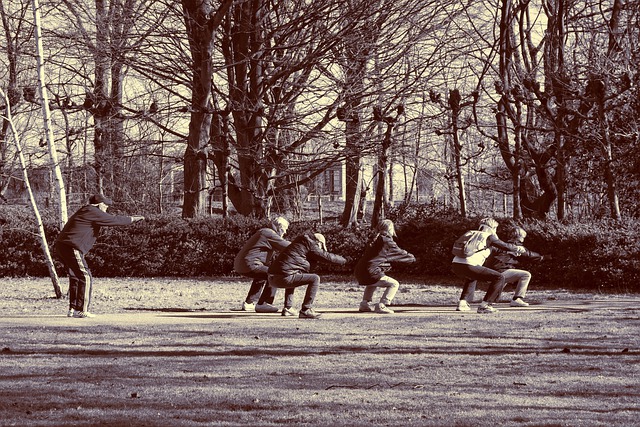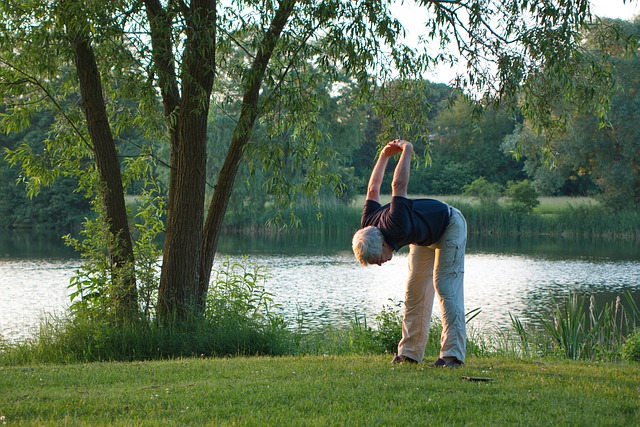The benefits of activity and exercise for elderly people who want to keep active
We currently help lots of people who are staying active well into their retirement, keeping allotments going and minding grandkids.
We understand the worries people have around doing the wrong exercises.
Many people have some old injuries they’re worried about flaring up and potentially needing surgery or medications to settle.
Some people worry if they haven’t exercised in a while, what others will think if they go to the gym and can’t keep up with the exercise classes.
You might feel like you’ve tried exercise before, and it didn’t get you fit and just made you hurt so you’ve been avoiding going back.
If this sounds like you then this article will outline the benefits of keeping active and how best to do that. So that you can live a healthier life and keep up with friends and family on fun weekends out.
This article is to help you discover the benefits of keeping active and learn how to exercise in a safe way before and after your retirement.
Staying physically active is the key for good health as you get older. But many people have some limitations from stiff achy muscles to painful joints. So knowing what to do can be a bit daunting.

family yoga
Benefits of Exercises for the Elderly
A massive fear many people have is memory loss. People worry if their memory starts to go, if they will be able to continue to live independently and do the things they need to do.
The good news is many forms of exercises help prevent memory loss as exercise is great for your brain health. Strength training and cardio exercise have both been shown to have a protective effect on your brain.
Benefits of Exercises for the elderly – Reduced falls risk
This is a real concern of many as a lot of people know someone who had a fall and after their health took a turn for the worse. In some cases they never got back to where they wear before health wise.
Exercise helps to maintain balance and coordination which diminishes as you get older, but you can still train your balance and improve it.
Another benefit of exercise is improving your leg strength. We know from studies people with stronger legs fall far less often than people with weak legs.
And what’s also great to know is on the odd occasion someone with stronger legs does end up falling, they’re far less likely to injure anything. As an elderly person with strong legs tend to control their fall better and for that reason, they are far less likely to injure anything.
Having stronger legs helps you
-
- avoid the falls
- keep your confidence high
- keep you out and socialising
Avoiding falls with by keeping your balance good and legs strong will help you avoid feelings of isolation that can develop if your confidence gets knocked after a fall and you stay at home more as a result.
Benefits of Exercises for the elderly- Reduce Tummy Fat
Exercise is important for maintaining weight and helping to shift the belly fat that’s common as we age. Belly fat leaves us at a heightened risk of heart disease. A little exercise can help us maintain a better weight, which also takes pressure of the heart and joints and can help us feel more confident.

Benefits of Exercises for the elderly – Socialising
Exercise is a great way to meet people and have fun and shared experiences. Lots of places offer classes for over 50’s, sports that draw in a slightly older participant like bowls. Or even chair exercise classes for those who aren’t great on their feet but want to get out and move in a safe environment.
Benefits of Exercises for the elderly – Enjoyment
Joining a gym or health club can provide a lot of exercise variety. For a lot of people, a barrier to exercise is that they can’t get into it. Naturally if doing 20 minutes on the spin bike 3 times per week is all you do, it’ll get boring. And you’ll stop going.
However, if you have a different exercise routine each day you go to the gym, like a class you like, spin and then a swim. It’ll be a lot easier to maintain long term. When I had the clinic based at gyms, it was the exercise classes with the elderly that had by far the best social circles of people who had met at the classes and become friends and started going for coffee after.
How safe is Exercise for the Elderly?
Almost everyone can do some form of exercise. Even if you’ve had a hip or knee replaced or you’ve suffered with your back long term. There’s still ways to become fitter, feeling better and moving better. And keeping fit will help you avoid falls and live a healthier life. There’s even exercises you can do in a chair to strengthen your legs and work on your balance. When you’re elderly it’s a great time to be active.

How Often Should Elderly People Exercise?
As you age, most people notice it takes them a little longer to recover from exercise and injuries. For this reason, we often recommend short bouts of exercise rather than very intense longer sessions that leave you achy for days. When starting off little and often is best, as this lets your body recover and get used to the exercise quicker and you won’t be struggling with soreness.
If you’ve not exercised for a while don’t jump into doing something challenging everyday as it can quickly build up to be too much. Start off x2 weekly and when you’re used to that then build from there. If you’re feeling an area as problematic or tight it is good to get a physiotherapist to assess the area and help you loosen and strengthen it so it doesn’t get in the way of you getting stronger and healthier and being more active.
The Best Exercises For Elderly People to Keep Active
Everybody is at different levels and enjoys different things. So, the optimal exercise for each person varies. However, there are some general things we have found that work best for people who want to stay active long into retirement. Having a little from each of the following sections:
- Moderate cardio (brisk walking, jogging, cycling, swimming, trail walks)
- Strength training (At home with a program made for you, or in the gym with the classes and equipment)
- Balance activities (these can be as simple standing on one foot)
When you combine the benefits of all 3 areas, you’ll get the most benefit in how you feel and move and the things you can keep up with.
The good news is many forms of exercises help prevent memory loss as exercise is great for your brain health. Strength training and cardio exercise have both been shown to have a protective effect on your brain.
How You Should Exercise If You Want To Keep Active In Retirement
We’ve covered lots in this blog, but we can’t cover everything in a short blog. If you have existing, or recurring injuries, that get in your way, these also need to be treated to ensure that you can exercise safely and ensure that you can get fitter so you can go on activities with your friends, play with the grandchildren at the park, or take the dogs on long walks at the weekend.
At Glossop Physio, we have discovery sessions so you can come in and talk to us first to find out if we’re the right clinic for you. And help you with things that are getting in the way of you having the active life you deserve.
We can help you get healthier and live your best life with your friends and family. Instead of being in pain which limits your mobility and effects your mood day to day. We want to help you be fit and active and able to keep with activities with the people you love.
You can call us on 07517421800 if you’d like to talk over the telephone.
Other Free Resources To Help


0 Comments